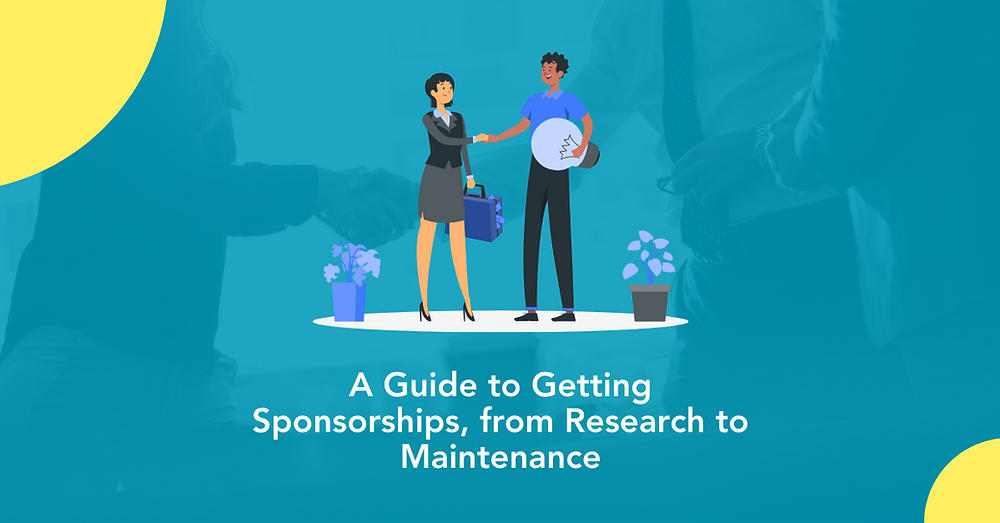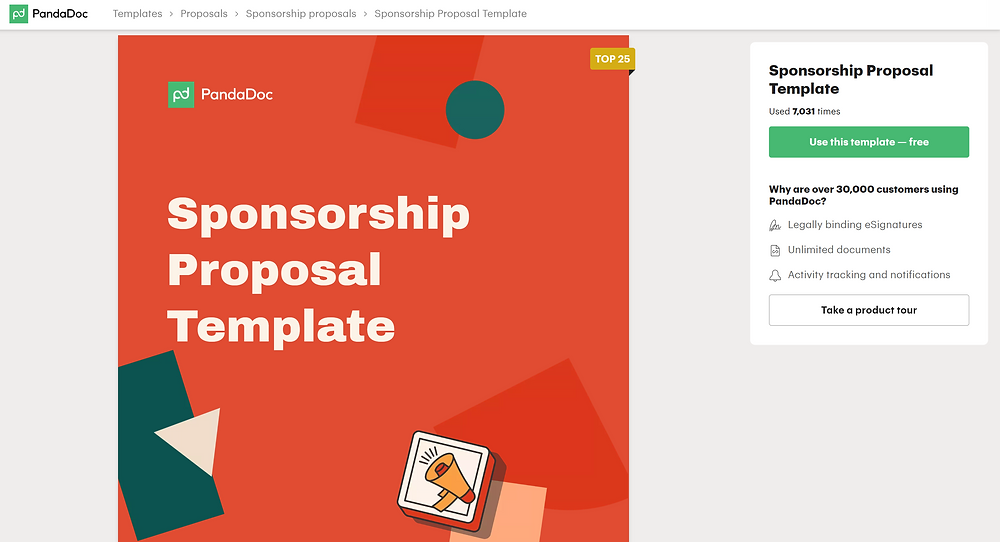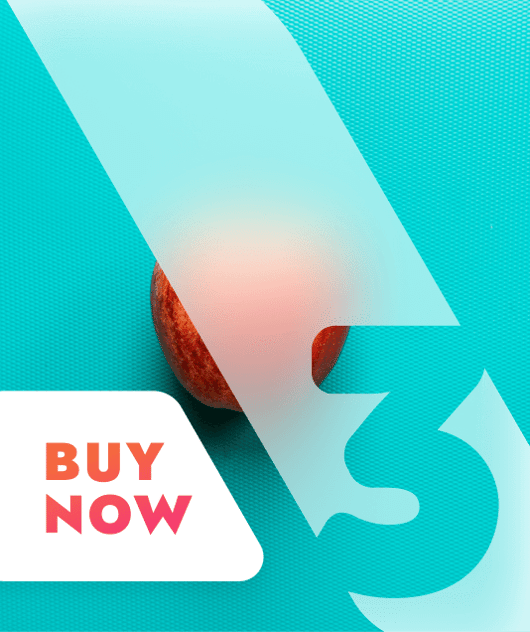A Guide to Getting Sponsorships: From Research to Maintenance

For the uninitiated, the world of sponsorships can seem mysterious and inaccessible. Many people who would benefit from these relationships are hesitant to approach potential sponsors for several reasons.
Some fear being rejected or offending potential partners with their initial pitch. Others are concerned about giving up too much control over their brand in exchange for sponsorship benefits.
Many brands remain cautious about approaching potential partners because they don’t know where to start looking or what to ask when initiating contact. Creating a successful sponsorship strategy and relationship requires research, planning, and persistence.
Once you understand the value of partnerships and how they operate, you will be able to confidently approach potential partners without feeling timid or overwhelmed.
In this blog post, we’ll cover everything you need to know about sponsorships so that you can take the first steps toward getting started with the right partner(s) in your niche!
What is a Sponsorship?
A sponsorship is a mutually beneficial relationship in which one party (the sponsor) provides financial or other assistance to another party (the sponsored party) for promotional or other purposes in exchange for rights to advertise themselves on behalf or in connection with the sponsored party’s activities.
Sponsorships are not a one-time payment but rather a long-term investment that the brand should look to benefit from long after the initial partnership has ended. Sponsorships are not a one-size-fits-all solution. Depending on the type of brand you are and what you’re looking to gain from a partnership, you may have many different options for sponsorship types.
The 3 Types of Sponsorship
There are three main types of sponsorships:
-
Cash
-
Gear
-
Trade
The most common type of sponsorship is cash, in which the brand pays the creator to be featured on their social media channels or website. Gear, which is offered by companies that sell products, involves giving the creator a product to use in their posts and videos. Trade is a little more complicated: In this type of sponsorship, the brand would either pay the creator of the product or offer the opportunity to create a product review.
Why Should You Get Sponsorships?
Sponsorships are a mutually beneficial relationship where you provide your audiences with new, interesting content and promote your sponsors to increase their brand awareness. Sponsorships also give your audience new content to engage with.
New, exciting content can create a conversation around your sponsored content and keep your fan base engaged for longer periods. Real engagement is the key to success with sponsored posts. You want to make sure that people are commenting and engaging with the post, not just passively scrolling past it and moving on with their day.
You can do this by creating a unique call to action in each sponsored post. Using a unique call to action for each sponsored post can help you keep engagement surrounding your sponsored posts high.
Sponsorships are a great source of income for creators on YouTube, Instagram, and other social media platforms. Getting sponsored by brands allows you to create content by using their products and also allows you to make money. Getting sponsored by brands is a great way to monetize your content and earn a full-time income without relying on advertisements.
Research: Know Your Audience and Partners
Before you start contacting potential sponsors, it is important to do some research. The first step is to make a list of potential partners with whom you would like to work.
Next, identify the companies or brands that are your ideal sponsors. Why would this company want to work with you? What value do you provide for them? What is in it for both parties? You don’t want to approach every brand hoping that they’ll want to work with you; you want to make sure there is a good fit from the start. It can help to create a sponsorship pitch to make yourself stand out from the crowd.
Sponsorship pitch templates help compile a list of information about your channel and content, but your pitch should be personalized to each company.
Below is a link to a free sponsorship template offered by Pandadoc. You can also find plenty of alternative templates if you're struggling to get started.

Screenshot of the PandaDoc sponsorship template
Plan: Decide What You Want to Achieve
Before you start contacting potential sponsors, you should have a plan in place. What type of sponsorships are you looking to get? What kind of value are you providing to the brand? What goals do you have in mind for the partnership? How do sponsorships fit into your overall content strategy?
You should have a clear vision for what you want to get out of the partnership and how you want to implement your sponsorships. This will help you to stay focused and organized during the initial proposal process and make you a more attractive partner to brands.
It is important to remember that sponsorships should benefit both parties. You may want to pursue a few different types of sponsorships at the beginning to see which works best for your channel. Once you find a few partners that work well with you, you can then focus on deepening those relationships and seek out sponsorships on a long-term basis.
Establishing Initial Contact
Once you have a list of potential partners and know what you want from sponsorship, it is time to pick up the phone or open an email program and start contacting potential sponsors.
Depending on the type of sponsorships you are pursuing, you may want to target companies directly or contact their marketing or brand representatives. Sponsorships are not a sale; they are mutually beneficial partnerships. That being said, you need to treat the initial contact like a sales call.
Make sure you have everything planned out beforehand. Have your pitch ready and know exactly how you want to present yourself so that you are confident and capable during the conversation.
It is also important to be genuine and not overpromise any results from the partnership. You don’t want to promise something that you can’t deliver. That will only hurt your brand and remove you from consideration for future partnerships.
Maintaining the Partnership
Once you have landed a sponsorship, it is important to maintain the partnership throughout the contract. Sponsorships should not just be a one-time payment; they should be a mutually beneficial partnership where both parties gain something.
It is important to not only deliver on your end of the deal but also to maintain a positive relationship with your sponsors. This can be done through regular communication and being upfront about any requests or needs. The best way to maintain a partnership is to be sincere and genuine in your approach.
Sponsorships take time and patience to establish, but they can be an extremely beneficial part of your business once you find the right partners. If you stay focused on finding the right partners for your channel and deliver on your end of the deal, sponsorships can be an excellent addition to your business.
Conclusion
Sponsorships can be a great way to monetize your content and earn a full-time income from your channel without relying on advertisements.
It can help to create a list of potential partners and know what you want from a sponsorship before you start contacting brands. You should have a plan in place for your sponsorships and make sure you are genuine and sincere in your approach to maintaining the partnership.
Sponsorships take time and patience to establish, but they can be an excellent addition to your business once you find the right partners.
Share this
You May Also Like
These Related Stories

How to Add an Offer | Ugenie | uHubs: Leader Guide

How to View Your Offers Directory | Ugenie | uHubs: Leader Guide

